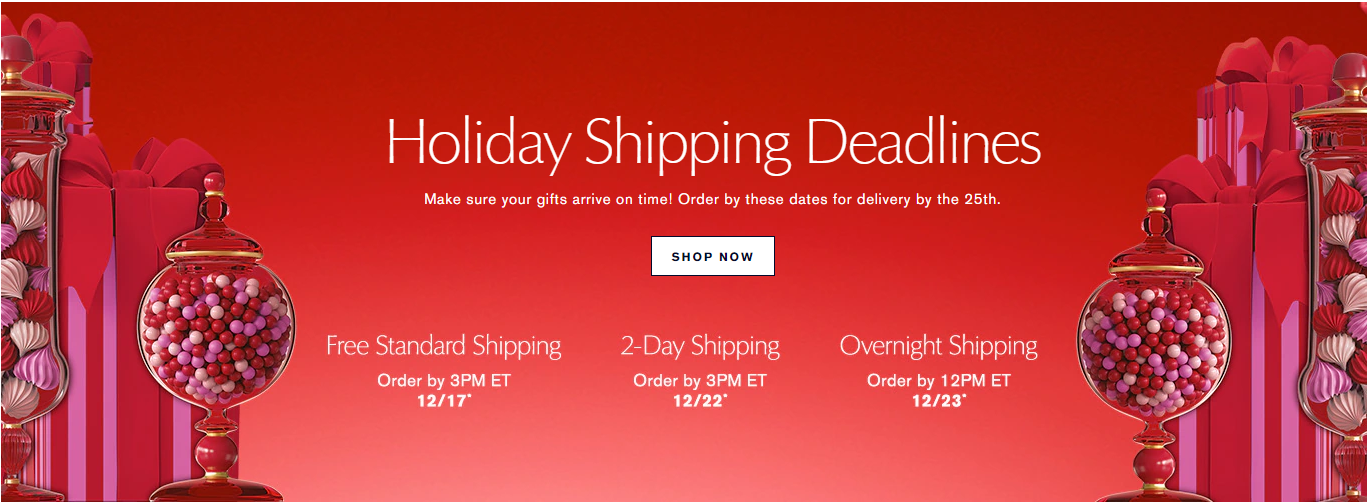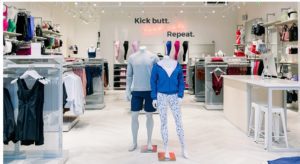In the 2021 holiday season, retailers and shoppers showed there was no going back to the pre-pandemic state. As in 2020, consumers went online to buy merchandise they otherwise might have purchased from store shelves.
Retailers that already adopted the omnichannel model ramped up their efforts by expanding services like curbside pickup and same-day delivery to new locations. At some retailers, shoppers ordered on the web for pickup and delivery at rates even higher than in 2020. Other retailers deployed omnichannel services for the first time.
Online orders came early this year
The pandemic was not the only challenge retailers and their customers faced in 2021. Global supply chains were a mess during the year, leading to out-of-stock merchandise and the possibility that last-minute shoppers wouldn’t find what they wanted.
Consumers got the message and acted accordingly, says Lewis Broadnax, vice president of digital and ecommerce at Sazerac, the parent company of more than 450 liquor brands.
“Consumers understood the supply chain issues being seen across all industries. We saw higher demand for shipping promotions early in the buying season. We saw a lower demand for expedited shipping as consumers completed their shopping earlier in December,” Broadnax says.
A Sazerac spokeswoman said it was too soon to talk about other trends during the 2021 holiday period.
Sazerac’s experience with early holiday shopping was not an isolated case. Data from Adobe Analytics indicates early shopping was so widespread that it took the edge off one of the most important shopping periods of the year.
For the five days from Thanksgiving through Cyber Monday, U.S. online retailers sold $33.9 billion worth of goods, down 1.4% from last year, according to Adobe Analytics—a unit of ecommerce and digital marketing software vendor Adobe Systems Inc. The only one of the five days that saw a year-over-year increase in online shopping over last year was Thanksgiving when sales ticked up 0.5%, Adobe says.
The decline in Cyber 5 sales, Adobe said at the time, reflected consumer awareness that many retailers were short of merchandise due to factory closures in Asia and snarled ports.
Digital Commerce 360 estimates that the Cyber 5’s share of online holiday seasons sales dropped to a 16.0% share in 2021, compared with 17.9% share in 2020 and 20.9% share in 2019.
That early ordering probably helped keep online holiday sales—and ecommerce in general—humming in 2021. Online holiday sales reached $211.41 billion, up 10.0% year over year and up 54.9% compared with the 2019 holiday season, according to Digital Commerce 360 data.
After a hiatus the previous year, shoppers returned to stores, fueling a 14.0% spike in total retail sales and causing online penetration to drop slightly to 24.1%, down from 24.9% in 2020.
In the home stretch, retailers pushed shoppers to pick up orders
In case shoppers didn’t get the message about supply chain problems, retailers worked hard in 2021 to remind them and encourage customers to buy early.
Ten days before Christmas, nearly a third (32%) of the Top 100 retailers’ homepages listed specific order cut-off dates for Christmas delivery. At least two others included a link to a page listing order deadlines for various kinds of merchandise, according to a Dec. 15 website check by Digital Commerce 360 editors.
Among the 32 merchants that listed a cut-off date on the homepage, about 81% listed dates of Dec. 20 or before. Five retailers listed Dec. 15 as their cut-off dates for standard shipping: seven listed Dec. 16 and four had Dec. 17 deadlines. The other 16 retailers listed dates after Dec. 19. Kay Jewelers, owned by Signet Jewelers Ltd., listed Dec. 23 as its deadline for Christmas orders, the latest cut-off date Digital Commerce 360 saw listed on a Top 100 retailer homepage.
Cosmetic brand The Estee Lauder Cos. Inc. made its cut-off dates particularly hard to miss. The retailer informed shoppers of its deadlines using a large, bright red banner in the center of its homepage.

The beauty brand Estee Lauder made its shipping cut-off dates a prominent part of its homepage.
Among the Top 100, Digital Commerce 360 classifies 48 retailers as retail chains. Of those 48 merchants, 30 (62.5%) used their homepages to encourage shoppers to use various omnichannel options, according to the Dec. 15 site check. These choices include buying online, picking up in-store (BOPIS), curbside pickup, and same-day delivery.
Pickup options were popular during the 2021 holidays
Pickup of online orders—particularly pickup services that allow shoppers to retrieve their orders outside a store in a contact-free manner—is exploding in popularity. According to Digital Commerce 360 data, 170 Top 1000 retailers offered curbside pickup in 2021, up from just 25 in 2020—a 580.0% increase. More Top 1000 retailers also began offering buy online, pick up in store (BOPIS). In 2021, 232 Top 1000 retailers offered BOPIS, up 15.4% from 201 retailers in 2020.
BOPIS and curbside are particularly popular over the holiday season, especially as those shipping deadlines pass. Adobe estimates that retailers offering curbside pickup or BOPIS fulfilled nearly one in four (23%) online orders via those pickup options during November and December 2021. That dropped from 26% in 2020, but was significantly higher than in 2019, when 19% of online orders were fulfilled using one of the two pickup options.
Fabletics, an activewear brand co-founded by actress Kate Hudson in 2013, has made omnichannel fulfillment a large part of the way it operates the network of stores it launched in 2015. All Fabletics stores use the retailer’s proprietary OmniShop technology. The software allows store employees access to customer preferences via handheld point-of-sale devices.
A spokeswoman for Fabletics—which operates based on a membership model—says the number of its members who used an omnichannel service during the 2021 holiday season was 35% higher than during the 2020 season. She declined to provide specific numbers but added that the lifetime value of an omnichannel chopper is 3.4 times higher than online-only customers.
Ron Harries, senior vice president of retail for Fabletics, says omnichannel options are popular among Fabletics customers.
“Fabletics members love our omnichannel offerings and enjoy being able to seamlessly shop online, in-store and through our mobile app utilizing omni features such as buy online, pick up or return in-store,” Harries says. “Members are particularly fond of Fabletics’ Legging Finder offering.”

Fabletics’ Legging Finder interactive tool uses a short quiz to help shoppers choose the best legging for them based on their desired fit, use, color and style.
Introduced in 2021, the Legging Finder interactive tool, available on touch screen devices in stores, uses a short quiz to help shoppers choose the best legging for them based on their desired fit, use, color and style.
Fabletics operates 74 stores in North America, according to the retailer’s website. That includes 24 locations it opened in 2021.
Melissa Minkow, director of retail strategy at ecommerce technology vendor CI&T, says the pace of change has not slowed for retailers looking to implement or improve omnichannel strategies.
“I’d actually say the pace of change in 2021 was even quicker than in 2020 because a foundation was there, which was established in 2020,” Minkow says. “Additionally, both because the foundation hadn’t existed prior to 2020 and because retailers were experiencing the pandemic for the first time, they couldn’t move nearly as quickly as they would have liked.”
The change was drastic in 2020 because it was urgent and quite different from what had had previously existed, but retailers faced limitations, Minkow says.
“2021 proved limitless and fast because retailers had full buy-in across their organizations. And especially importantly, consumers’ omnichannel adoption and lifestyle integration in 2020 also gave retailers permission to fully lean into omnichannel strategies and efforts,” she added.
More innovation is on the way
Nikki Baird, vice president of retail for commerce technology provider Aptos, says retailers in 2022 will continue to refine their fulfillment operations and other aspects of their operations.
“I’ve seen more retailers talking about store redesign in general, in preparation for a greater omnichannel role—moving storage into the front of the store for BOPIS orders and making the storage size larger to hold more BOPIS orders. Retailers are making backrooms larger and rethinking inventory allocation between the front of store and the back, so that high-velocity items for BOPIS stay in the back for easier picking if they’re not moving as quickly straight off the shelf,” Baird says.
This year, she says, retailers also plan to experiment more heavily with “dark stores”—essentially small warehouses used to quickly fulfill online orders. Other strategies will likely include drop shipping, and strategies like replenishing stores from ecommerce distribution centers when that makes sense, Baird says.
“All of these plans seem to come directly from the success of omnichannel inventory strategies over the holidays,” Baird says. “For our retail customers, the ones who performed the best had more dynamic fulfillment strategies, where they were able to shift from online to store as shipping cut-offs were hit.”
Those retailers, she says, were able to provide better inventory visibility to associates and customers.
2022 had barely started when ShopRite, a grocery store brand owned by retailer co-op Wakefern Food Corp., began experimenting with a new fulfillment model.
In January, ShopRite unveiled a contactless retrieval “pod” shoppers can use to pick up online orders adjacent to its store in New Rochelle, New York. The free-standing QuickCollect GO! POD from technology vendor Bell and Howell can hold ambient, refrigerated and frozen foods, making customers’ entire grocery orders are available at once.
ShopRite spokeswoman said store employees would continue to shop and assemble online orders in the store and load them into the pod for self-service pickup. However, the pod allows customers to pick up their groceries at times most convenient for them, reducing store traffic during busy hours.
“It’s self-checkout and pickup for online orders that’s done right outside the store, but customers can also still opt to pick up in the store or for home delivery,” the spokeswoman says.
James Melton: @JDMeltonDC360.